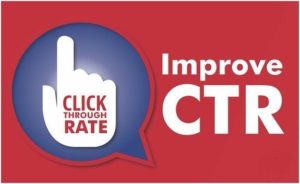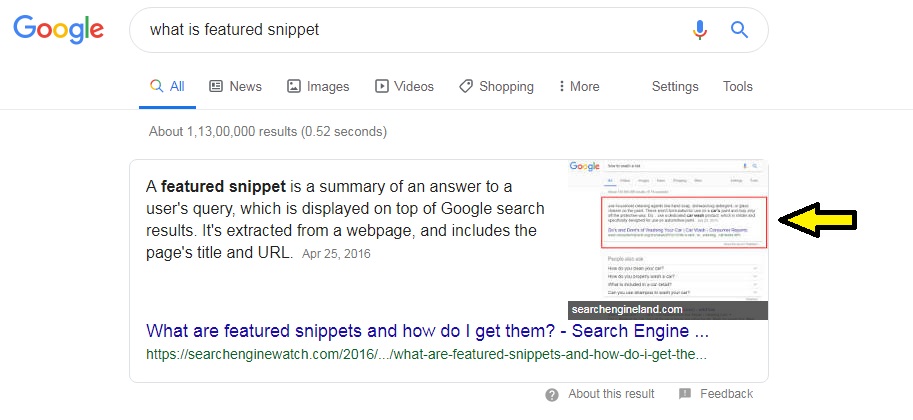The SEO industry is changing fast. And it is changing for good. Google has come up with truly awesome updates in the past few years. Considering these updates, ranking in the SERPs and conducting SEO has become difficult. Thankfully, this is true for the ones who can’t keep up with the updates.
Notably, these updates are meant to enhance the user experience. In other words, it’s all about improving how a visitor on your website feels. You need to understand one thing, Google intends to deliver its users what they are looking for. And to rank amongst the top results you need to hack into what those users are looking for.
This guide is meant to offer you an in-depth knowledge of modern SEO. And of course, how to hack into what Google’s users are looking for. I believe you know, that these users are your potential customers or traffic. So, more or less, you are the one who’s going to benefit from these hacks.
I wish to clear one thing. This guide is not some lame “in-depth” guide. You would find the most updated tricks and tips to improve your SEO in the year 2019.
- You Can Teach RankBrain
Before we proceed, it is necessary to understand what RankBrain is.
RankBrain is a program in Google’s core algorithm that teaches Google to relate to the search terms and grow smarter. In other words, RankBrain is the official name for Google’s artificial intelligence.
Now that you know what it is, you should understand how it works. Google considers two measurements to rate and rank any piece of content on the internet; 1) Dwell Time; and, 2) Click Through Rate.

The AI measures how much time a user spends on a page. The more time a user spends on a certain page, the better it is. Simply stated, if a user spends time on a page, it is indicative of good content.
Then there is the number of users that visit a certain page. The more the number of visitors a page receives, the better it ranks.
Let us take an example. Say, you search for, “cocoa spread”. It is a well-known fact that most of the users click on the first three results. Let’s say you click on the first result. After visiting the page, you go through the content but don’t like it. You would bounce back from that page.
Google makes note of this. If the page receives enough bounces, Google will push the page to the bottom, gradually dipping its rank.
Now let’s say you clicked the third link in the results. And you liked the content. As already mentioned Google makes note of dwell time, which is indicative of user experience. Google will notice that you haven’t bounced from the page back. Google will gradually pull up this link in the search results.
Now that you know how this works, you can optimize your website in such a way that it receives more dwell time and lower bounce rates.
- You Need To Hustle At CTR
Talking about Click through Rate, it is important to understand how it can be improved. To master your SEO in 2019, you will have to master at CTR. Mostly because of RankBrain, but also because most of the first page now is occupied by ads, featured snippets and answer box that were introduced by Google in the year 2015.
I have been consistently telling that Google intends to deliver its users the best experience by showing the most relevant results. One of the major enhancements in user experience is the inclusion of the answer box.

Research shows that more than 99% of the featured content in the answer box is from the top ten results. This means you need to rank amongst the top ten, at least, to get featured by Google.
To stand out of the jargon and get clicks, your content needs to say it out loud, “Click Here!” Not in a literal sense, but surely in context. Your content needs to be so tempting that the user cannot pass by without clicking on the link and visiting your page.
One way is that you can make your Meta-tags and Meta-descriptions briefly and precisely informative to answer the users’ query. You can take help from the “People also ask section” on the SERPs.
Another way could be to make your domain and sub-domain extensions easily understandable by the user. A study shows that URLs that are self-descriptive of the content are more likely to receive high CTR than the ones that are absurdly created.
- Focus On Featured Snippets
According to a study conducted by SEMrush, almost 11% of all search results now feature snippets and answer boxes. Why not make use of this snippet box to focus more on the user and increase CTR?

In fact, the same study shows that these featured snippets receive more clicks than the result at #1 rank. Obviously, the question pops up, how to get featured.
Step 1: To begin with you need to research for keywords. You need to sort out the keywords that you are already ranking for. And then further filter out the keywords that result in feature snippets. You may ask why only the keywords that you already rank for?
Well, to answer this question you need to understand how this works. The answer boxes and featured snippets pick up the links and display the content that already ranks amongst the top ten results. So it is pretty impossible to get featured if you don’t rank already on the first page.
Step 2: Moving on further you need to create snippet bait. Snippet bait is a 40-60 word piece of content specifically designed for featured snippets and answer boxes. You can design your snippet bait to rank for all types of answer boxes including the ones that contain a small paragraph or the ones that contain tables.
The key is to design your content in such a way that the bot can easily read and recognize your content. Pssstt…you are giving bait to Google bot.
- Content That Covers “All” Wins
Since the day Google went live on the internet, it has considered content as the prime factor in its algorithm. It is well known a fact, that a piece of content is viewed as legit by the webmasters. You should look into a topic that shall cover each and every aspect. Concerning the fields around it.

A sourced study revealed that users tend to find in-depth articles and pieces of content as interesting and engaging. The better you lay the content, the more your audience will grow. Once your audience begins to expand, you’d start receiving an improvement in CTR. The more your dwell time increases, the closer your website gets to the top ranks.
Once again, good content will also decrease your website’s bounce rate. And we now know it, it’s best if bounce rate remains low. An established fact, through research, found out that dwell time greater than just over 3 minutes for a piece, 2000 words long, has more chances of making it to the first page.
Remember, Google intends to deliver its users a one-stop shopping module. A Google searcher gets all the information at just one place. Moreover, for a comprehensive piece of content, you should include images, videos, creative, and whatever that you can. This would help you explain your words more precisely and also improve the engagement of your piece.
Having said that, it is also important to include keywords in your content. Google still hovers over the keywords, and look for its density. You cannot ignore the use of latent semantic keywords (LSI). You can also include long tail keywords, wherever necessary.
- Mobile-First Indexing Needs Optimization
There is no doubt that mobile users of Google are increasing every second. And all of them make use of it to look for answers to any number of questions. From searches like ‘where am I?’ to ‘What are the best SEO techniques in the year 2019?’ Google users are asking all sorts of questions. And even more interesting is that Google is delivering almost each and every search.

It is pretty obvious that users would only visit websites that are mobile optimized. In other words, it’s the responsiveness of a website to different operating platforms that gains you more traffic. Mobile friendliness of a website is favored by webmasters and the websites are offered a better rank on the SERPs. The mobile comes first now, that’s why a lot of companies are switching from paper forms to mobile forms.
Get your SEO ready for an upgrade to mobile first. A mere ‘m.’ mobile version would not work. According to Google, it is fine to hide content under ‘hamburger menus’ and ‘accordions’.
These features are not as responsive on earlier versions for mobile. Getting your website a tweak of the modern mobile versions ( to enhance its responsiveness can help. The better your content is consistent across mobile and desktop versions, the better Google considers it.
- Tap Into Video Campaigns
It’s true! Videos are viral these days. Videos are the second most searched content over the internet. YouTube, already is the world’s second largest search engine. It is estimated that by the beginning of 2021, videos will be catering to more than 80% of internet users. A winning strategy is not to gain the first position, but also to secure the second position as well.
Tapping into video campaigns will help you reach out to more audience. The ultimate goal is to increase the domain of the audience. Be it through a written piece of content or a media component. As long as you are reaching your audience, your SEO is the best.
Including videos is directly related to the traffic on your website as well. Remember, the more engaging is your content, the more is dwell time. Your website receives organic traffic, and you stay in business.
YouTube, also offers the opportunity to link your channel and videos to your website. A great source of the most potent referral traffic.
- Do Not Miss Out On Voice Search
Certainly, voice searches are the next big thing in SEO. There has been a tremendous increase in voice search users over the past decade. You may jump out your seat, to know that almost every second adult makes at least one voice search per day.

Here is how it works:
Stage 1: To rank on top of voice searches, your website needs to be amongst the first page rankers. It is not mandatory, but it helps a lot. The crawler would index your website and co-relate that information with the search term.
Always keep in mind, you have to focus on the customers of Google. Google’s customers are your target audience.
Stage 2: It would be even better if your website and your content make it to the answer box on the desktop. This makes it even easier for Google to answer the queries of its users.
Including a question in your content and simultaneously answering to it makes it easier for bots to identify the specific question and its answer. Just what the user wishes to know.
Stage 3: Make use of obvious terms and questions that a user would search. For example, if a user would be looking for instruments for astronomy, then he would ask; “instruments for astronomy”. Not “what are the instruments for astronomy?’
Having said that, you need to understand that placing all these in your content naturally, is equally important. You should not be stuffing these things into your content.
Google will always pick up the answer from your content. Including these questions and answers into your code and not actual content will affect your ranking.
- New Google Update Considers E-A-T
Google is very ethical and places a high value on legit content. It has been giving hints about how a piece of information that is useful to the users and benefit them is preferred over the content that may spread hatred, anger, or otherwise, promote something harmful to the users. Google tries to deliver information that is unbiased.

Google has updated E-A-T to its core algorithm. Earlier this year, Google tried to emphasize once again on the Expertise – Authoritativeness – Trustworthiness as a key factor for scoring page quality.
Talking about page quality, this is something that is purely on-page. The webmasters are looking for the quality of the content on your pages. Often, websites represent actual companies and organizations. Google analyzes that the content and the organization are completely relevant and useful for the user.
Expertise: You need to be an expert at what you do. There are various signals that trigger your expertise including your social signals and citations. Google has clearly stated that it considers the expertise of the contributor of the content as well as the content itself to measure PQ.
Don’t worry if you are not an expert. You can always hire someone who is an expert. Just make sure that you don’t hire someone randomly, but only the expert.
Authoritativeness: The webmaster studies the authority of the contributor as well as the page. Then again, the authority of the contributor can be analyzed by measuring the CF of other pieces created by the same individual. In order to measure the authority of the page, the crawlers trace the backlinks. We’ll come back to it.
Trustworthiness: Both, the individual contributor and the page is analyzed for its trustworthiness. If the contributor states something other than what the other sources say about them, then they may see a dip in their trustworthiness.
Similarly, a webpage’s trustworthiness is measured by its Trust Flow, and Citation Flow.
Since we have struck hands with the value of backlinks…
- Backlinks And Content Still Go Hand In Hand
From day one, the content has been the true king on the internet. Everything that SEO revolves around is somehow, one or the other way to measure the quality of the content and its relevancy. Content that benefits or helps its users in any way, is good quality content.

You should think of your content as something that a salesman would tell to make sales. Your audience is your customer. And they are looking for something. The moment you realize what they are looking for, and deliver it through your content, you become the expert.
A good quality content gains authority over the ones that do not benefit the users. And the ones that violate this relevancy are the ones that rank at the bottom. Such as, a website that promotes arms and ammunition, human trafficking, or any such inhuman activities won’t ever make it to the first page. Whereas, a piece of content that helps spread smiles, teach how to cook, or maybe help promote their talent, will gain ranks on SERPs.
Moreover, good quality content will receive more backlinks from high authority websites. Which is, once again, a remarkable strategy for SEO. And it’s evergreen.
- Thanks To Social Media, Visual Content Is Still On Hike
Remember we talked about how media can enhance the engagement of your content? What if I tell you that just the visual content can do it? You don’t even need much of written content.

Social media is the second largest online portal, in terms of traffic. Second to the search engines. Users are pretty much active on social media in real time. Spread your content through visual content. Grow your user-base.
For example, e-commerce giants, such as Amazon and e-bay, keeps their audience updated with the latest on-goings about their organization. This helps with branding and content marketing.
These concepts are not at all new to the SEO industry. But, now with every search, Google becomes smarter. And you need to educate it about your content.
Visual content can help you keep your website or your brand alive in the memories of your audience. The more they hear from you (or read from you), the more your website builds trust amongst your readers. As simple as it seems, this is true for everyone.
Especially if you already rank on the first page for your specific keywords. Google prefers the content that directly answers the search of the users. And it makes use of metrics such as readability score and inclusion of keywords in the content.
But when it comes to visual content, the scoreboard is different. Google measures the impressions that a visual receives on the internet organically. These impressions are indicative of how tempting your visuals are to the users.
Note: Impressions are the clicks to visit your website or the like, share, or comments that your social media content receives.
Hop onto the ride that boosts these social signals. According to a study, the social signals are more authoritative as compared to any other signal. This can be compared to the amount of traffic that these social media platform fetches online. Higher traffic provides with a more accessible opportunity to drive traffic to your website. So, you also get referral traffic from social media.
Make your visuals in a way that they should force the user to visit or take action on your post. The registered impression build trust and authority. Thus boosting your ranks to the first position on the SERPs.
In nutshell, it all comes down to the amount the traffic, the trustworthiness and authoritativeness that your webpages offer to the user.
Bonus:

At this point, I’d like to mention a bonus tip for SEO this year. You must have read about YMYL (Your Money or Your Life) in various articles related to SEO. Let me take the privilege to explain to you what it really means.

Google stresses on promoting just the legit content. The more your content is focused on what you deliver, and how it solves a problem, the better your content is rated. The high ratings of your content get a boost in its ranking on the SERPs and its chances to get featured in the special sections.
You should think about it. Consider how your content would help improve someone’s life, health, business, or passion.
I hope that I’ve justified the topic and satisfied you with the information.







